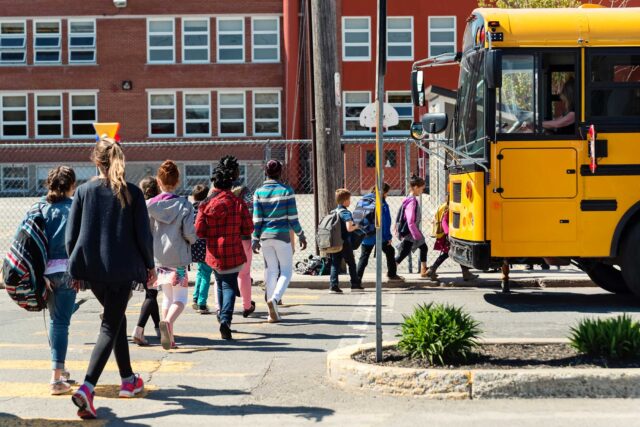The widely anticipated release of enrollment numbers for 2020–21 quantified what California districts have known for months: enrollment has declined. Statewide, public K–12 enrollment declined nearly 3%, or over 160,000 students, with kindergarten numbers falling most, by 12% compared to around 3% in grades 1 through 8. High school numbers increased, but by less than expected.
As funding ties directly to the number of enrolled pupils, schools could suffer fiscal consequences with continued declines. By law, districts are “held harmless” for declines for one year—and last year’s budget provided a hold harmless for the 2020–21 school year. That is, school budgets for 2020–21 are unaffected, but continued enrollment declines could mean cuts in future years.
The state had anticipated a spell of falling enrollment. Before the pandemic, the Department of Finance projected a decline of about three-tenths of a percent this year—instead, the rate was eight times higher, with much larger declines than expected in early elementary grades. Younger children can struggle with remote learning; in lieu of hours a week of video chat instruction, many parents may have held their kids out for a year, enrolled children in private school, or homeschooled.
The largest declines for kindergarten were among African American (20%) and Native American (23%) students, at roughly twice as large as for Latino students (11%). Asian American and Pacific Islander students (3%) saw the smallest drop. A similar demographic pattern held across later grades, but with smaller drops. Moreover, enrollment fell more among low-income students across grade levels (3.2% vs 1.7% statewide), although declines were smaller for white students.
Enrollment tumbled in parts of the Sierras and along the coast: Mono, Inyo, and Sierra counties fell by more than 8%. San Francisco and other Bay Area counties fell between 2% and 4%, while Los Angeles and Orange Counties both dropped over 3%. In general, Central Valley fell by about half that amount. Numbers did rise in some Northern California counties: between 0.4% and 4.3% for Alpine, Sutter, Lassen, Glenn, and Trinity.
The key unknown is whether declines will persist. Parents may send kids back to school if classes are in person, but whether instruction will be fully in-person this fall remains unclear. Even when it is, some remain hesitant to return. Meanwhile, parents who opted for homeschooling or private schools may not return to the public K–12 system. Migration may also play a role, particularly in districts with more lower- and middle-income households who are leaving California for other states.
In the short term, parents and educators will face difficult decisions about whether to hold back young children who were absent but return this fall. Additional supports, such as tutoring or after- or summer-school programs could help make up for a lost year of instruction.
Continued declines in the longer-term would signal a loss of funding in 2022–23. Fortunately, record-high funding proposed for K–14 schools in next year’s state budget and federal funding will cushion districts who might otherwise make cuts. Nevertheless, persistent declines will only add to the many difficulties facing districts as they attempt to accelerate student learning after a disruptive pandemic year.






